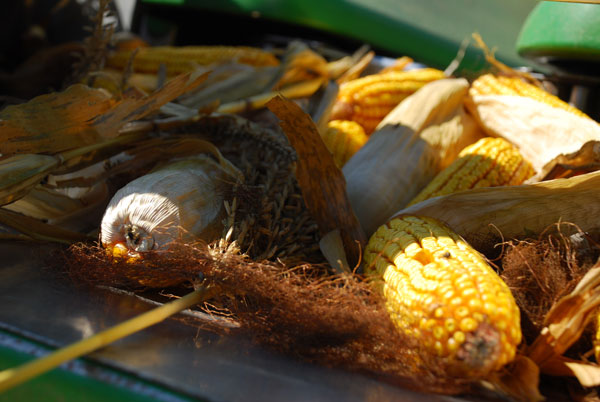Corn prices are likely to remain low, but so will cattle markets.
September 1, 2016

Despite low grain and cattle prices, cattle feeders and producers shouldn’t drop their guard on risk management, even though fractured cattle futures contracts are hindering hedging opportunities, says Dan Basse, a leading commodities analyst and president of AgResource Co.
Basse’s outlook for cattle and feedstuff production and marketing are always anticipated at the annual Feeding Quality Forum (FQF) presented partly by Certified Angus Beef. But his message presents some blunt truths.
“Chicago is broken. There’s trouble with risk management on your side of the table. There is distrust of the CME cattle futures markets,” says Basse, who spoke at FQF sessions last week in Garden City, Kan. and Amarillo, Texas.
“The CME live cattle contract is $10 (per cwt.) under valued. There are not enough cattle traded on negotiated grids to develop a true price…. We need a beef contract that is USDA-reported every day that is not manipulated, that can be tracked and that is cash settled.”

BEEF Seedstock 100 List
Looking for a new seedstock provider? Use our UPDATED Seedstock 100 listing to find the largest bull sellers in the U.S. Browse the list here.
Basse sees continued bearishness in the cattle market. “We still see pressure forthcoming in prices. Cash cattle should see a $95 to $97 per cwt. bottom,” he says. “But cattle feeders still need to have their margins protected. We need protection enough in order to be around for the next bull market. Anytime you can lock in something that has green on it – do it.”
Cheap corn?
Basse remains bearish on corn, but urges against complacency. “With record supplies of corn and other grain worldwide, cattle feeders and producers should expect low grain prices to continue,” he says. “You don’t need to worry about running out of feed supplies. However, we’re not as bearish as we have been and encourage cattle feeders to not be overly bearish on grain.”
His reasoning lies in the chance for a dreaded La Niña weather pattern similar to the one that dried up much of the grain production in the Corn Belt just a few years ago. “Weather will be the biggest grain price mover in 2017,” Basse says. “Cattle feeders should be concerned about grain markets next year.”
Without major weather damage on crop production, he sees the average cash corn price at about $3.40 per bushel for the 2016-2017 crop year. But with large national and world stocks brought on by continued strong production, the U.S. could see corn slump to $2.75 the next five years.
Depressed corn prices are a signal that more Midwestern acres will go into soybeans. “I think we’ll see more bean acres than corn acres next year,” Basse says, adding that only a federal crop management program will entice farmers to reduce production. “Farmers don’t let land lay idle. We need the government to do something to manage supply because farmers don’t do a good job of it.”
Other things that may impact grain prices are U.S. exports to China and other countries and factors that may create roadblocks. “Argentina is approaching as an agriculture export powerhouse, with big tax and currency incentives to producers,” Basse says.
The value of the U.S. dollar also remains bullish, which make foreign feedstuffs sold using other currencies less costly to would-be buyers of U.S. commodities. Basse says another twist that could impact corn prices is discussion that “zika-free grain certificates” may be needed for sales to China.
Other market influences
Pete Anderson, director of research for Midwest PMS, agrees that some form of risk management “is more critical than ever before” due to forces feeders and producers cannot control.
He points out that consumers are paying retail beef prices similar to what they were when live cattle prices were in the $150-plus range, even though cattle prices are now far lower and packers are enjoying huge margins. “Packers are fully utilized (in kill capacity) and they have high margins,” Anderson says. “Packers have the leverage.”
That leverage is similar to when fed prices were high and packer margins were squeezed. “We (cattle feeders and producers) didn’t give any back when we had the record prices and they’re not going to share with us now,” Anderson says. “It’s a cyclical system and will return to normal.”
Larry Stalcup is a freelance writer in Amarillo, Texas.
You might also like:
Do small cows make more money?
13 utility tractors that will boost efficiency
How to get more value from your cull cows
14 thoughts to help get those heifers bred
Photo Tour: World's largest vertically integrated cattle operation
About the Author(s)
You May Also Like



